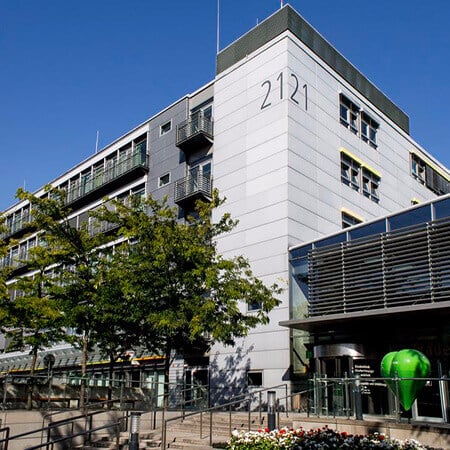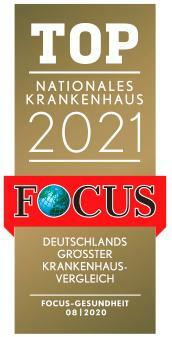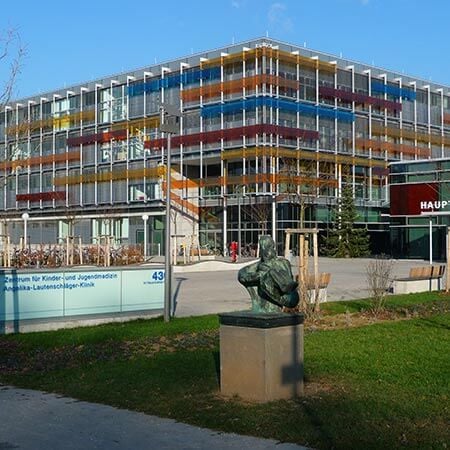Yolk sac tumors (also known as endodermal sinus tumors) are neoplasms developing from germ cells, ovarian germ cell tumors. These are most common in girls and young women. The younger a patient is at the time of diagnosis, the better the prognosis. The average age of women with this condition is 19 years old, and after 40 years, yolk sac tumors are extremely rare. Doctors in medical centers in Germany perform sparing operations on the ovaries and use polychemotherapy. This combination of treatment methods allows for a survival rate of up to 95% in early-stage cancer.
Content
- Treatment principles
- Treatment of women of reproductive age
- Treatment during menopause
- Treatment of yolk sac tumors in Germany
The disease is usually treated with surgery and chemotherapy. Men can undergo an inguinal orchiectomy and a retroperitoneal lymphadenectomy. Women have a hysterectomy.
You can undergo your treatment in one of the following hospitals: University Hospital Rechts der Isar Munich, Leverkusen Clinic, or University Hospital Tuebingen.
You do not have to organize your trip yourself, as the Booking Health specialists will take care of these concerns. They will advise a clinic, a doctor, and a treatment method. Our employees will make an appointment for you on the preferred date, without a long wait period. They will help to get a visa and complete the paperwork necessary for your trip. You will visit a clinic with an interpreter, and for any questions you can contact your personal coordinator 24/7.
Treatment principles
Yolk sac tumors are rare, accounting for up to 20% of malignant ovarian germ cell tumors. If untreated, yolk sac tumors progress rapidly, metastasize, and eventually lead to death. But if the disease is detected in time, it can be completely cured.
The very first symptom of the condition is often a palpable tumor-like mass in the abdominal cavity, because due to the active blood supply, the tumors reach large sizes, up to 30 cm. The final diagnosis is established using CT or MRI scans, (alpha-fetoprotein, AFP) tumor marker blood tests, and based on the results of a histological examination of the material removed during the operation.
The main methods for this pathology are surgical treatment, which can be performed in different extents, and chemotherapy. A treatment regimen for yolk sac tumors depends on the stage of cancer, the age of a woman at the time of diagnosis of the disease and her reproductive plans, and the presence of concomitant pathologies.
In most children, the pathology is detected at stage 1, which allows for a more sparing treatment. Yolk sac tumors are often combined with malformations of the genital tract.
Treatment of women of reproductive age
The treatment begins with elective or emergency surgery. Elective surgical treatment is performed after laboratory (a blood count test, liver and kidney function assessment, a blood test for infections, and AFP level assessment) and instrumental (MRI and CT scans) examinations. If there are indications for an emergency surgical intervention, the extent of the preoperative diagnostics is reduced. These indications are as follows:
- torsion of the tumor pedicle with rapidly progressive necrosis;
- ruptures of the tumor capsule with the threat of spread of malignant cells to the abdominal cavity and retroperitoneal space.
Elective surgery can be performed endoscopically (through 3 small punctures in the anterior abdominal wall). Should emergency operations be required, surgeons choose a midline laparotomy, which allows for a better overview of the surgical field. The removal of the ovary affected by the tumor is supplemented by the removal of the uterus or the affected regional lymph nodes whenever required.
A surgical intervention is followed by up to 6 courses of polychemotherapy at an interval of 3 weeks. In the early stages of cancer, and if a woman wants to maintain her reproductive potential, doctors may delay chemotherapy by conducting more careful medical supervision over time.
Treatment during menopause
Ovarian yolk sac tumors in menopausal patients require more intensive therapy. Even women with the early stages of the disease require only combination treatment, such as a surgical tumor removal with a full course of chemotherapy.
The extent of surgery often includes the removal of both ovaries, uterus, and regional lymph nodes. The supply of eggs in the ovaries is depleted at the time of menopause, and their hormonal activity is also minimal. In such a situation, doctors opt to reduce the risk of cancer recurrence through extended removal of the organs of the reproductive system.
When conducting polychemotherapy, doctors use platinum-based drugs, etoposide, and bleomycin. Medicines are combined to achieve the maximum anticancer effect. Physicians additionally prescribe symptomatic treatment, which helps to endure long-term use of chemotherapy drugs.
Treatment of yolk sac tumors in Germany
The treatment of yolk sac tumor in Germany includes surgery (usually minimally invasive), chemotherapy with modern drugs and a careful follow-up.
Surgical interventions can be performed even in the presence of metastases. Doctors remove the uterus with its appendages and all tumor foci that are found in the abdominal cavity. And even if not all metastases are removed, the disease can still be cured. Most women respond well to chemotherapy. During the treatment, doctors monitor its effectiveness with the help of (AFP) tumor marker blood tests.
You can undergo your treatment and rehabilitation for yolk sac tumors in one of the German hospitals. You are welcome to visit the Booking Health website to select the most suitable medical center. Here you can find prices, compare the cost of treatment in different hospitals and make your treatment appointment at the best price. The specialists of the Booking Health company will help you to select the most suitable clinics in Germany and organize your trip.
Authors:
This article was edited by medical experts, board-certified doctors Dr. Nadezhda Ivanisova, and Dr. Bohdan Mykhalniuk. For the treatment of the conditions referred to in the article, you must consult a doctor; the information in the article is not intended for self-medication!
Our editorial policy, which details our commitment to accuracy and transparency, is available here. Click this link to review our policies.
Sources:
National Center for Biotechnology
European Society of Gynaecological Oncology - ESGO
Healthline




















